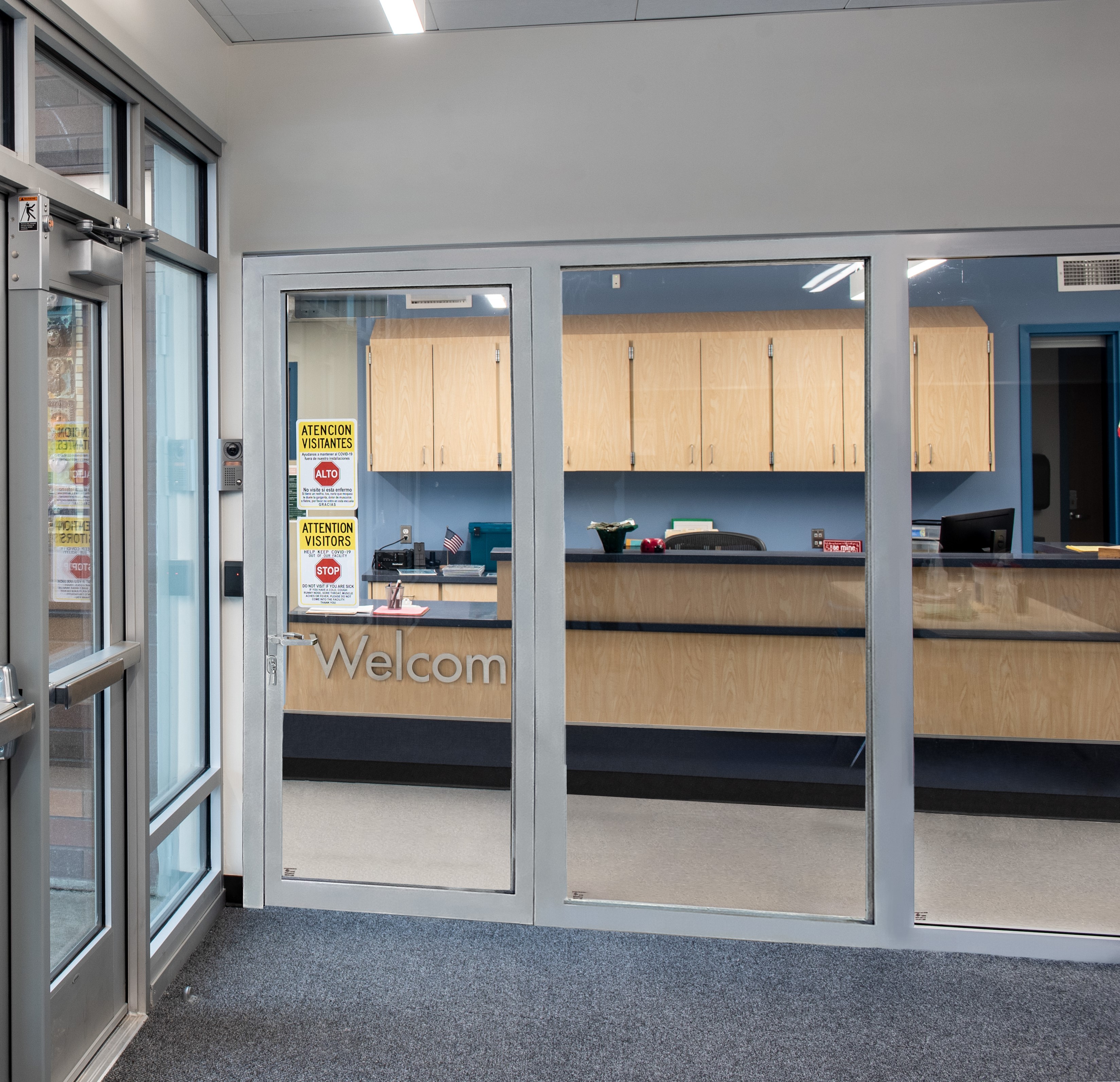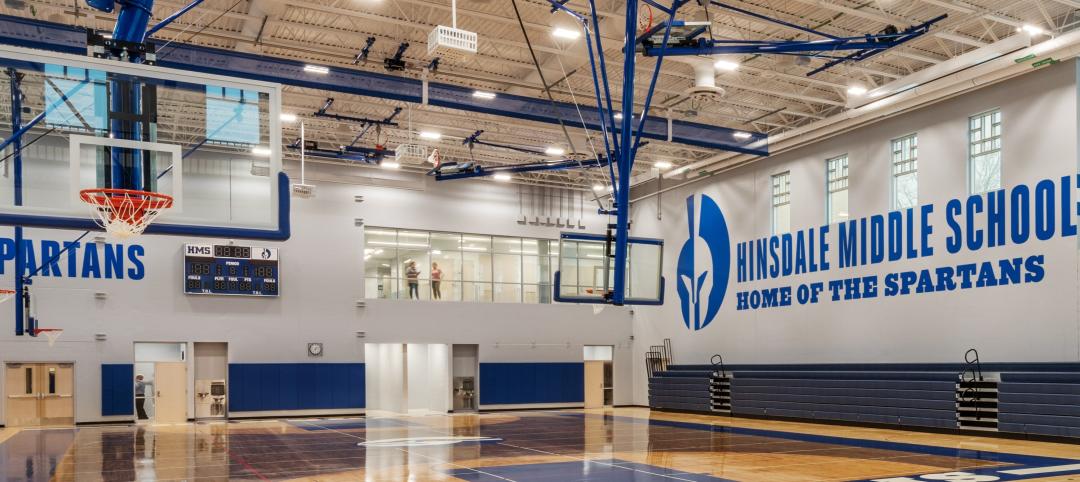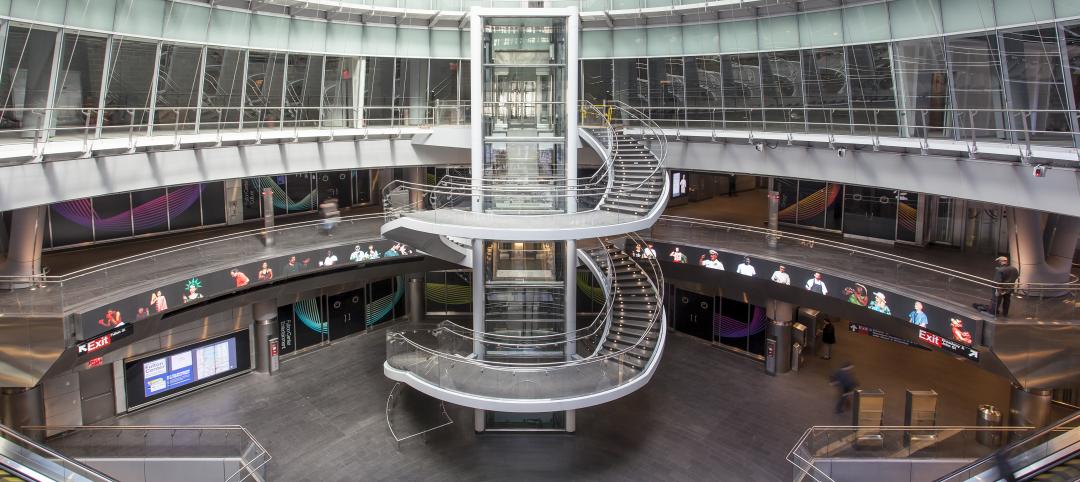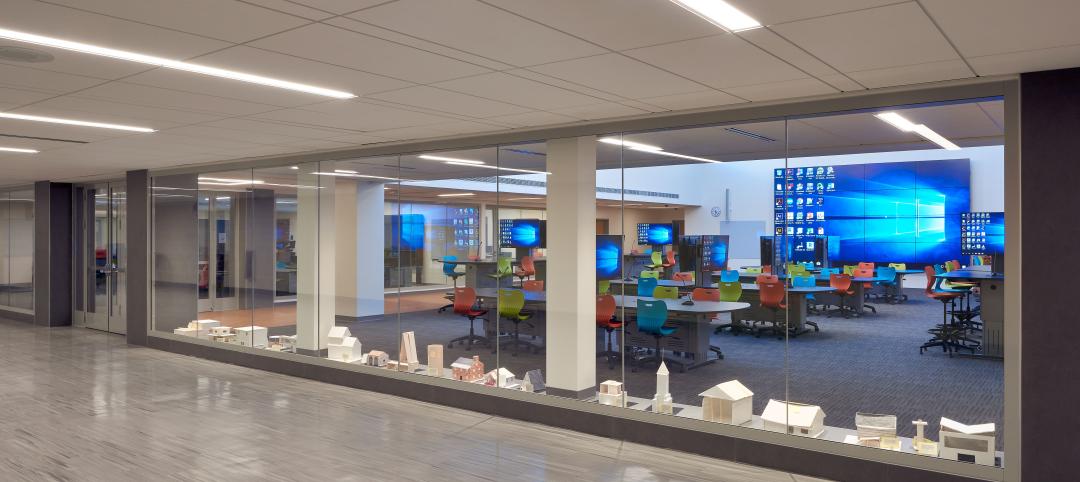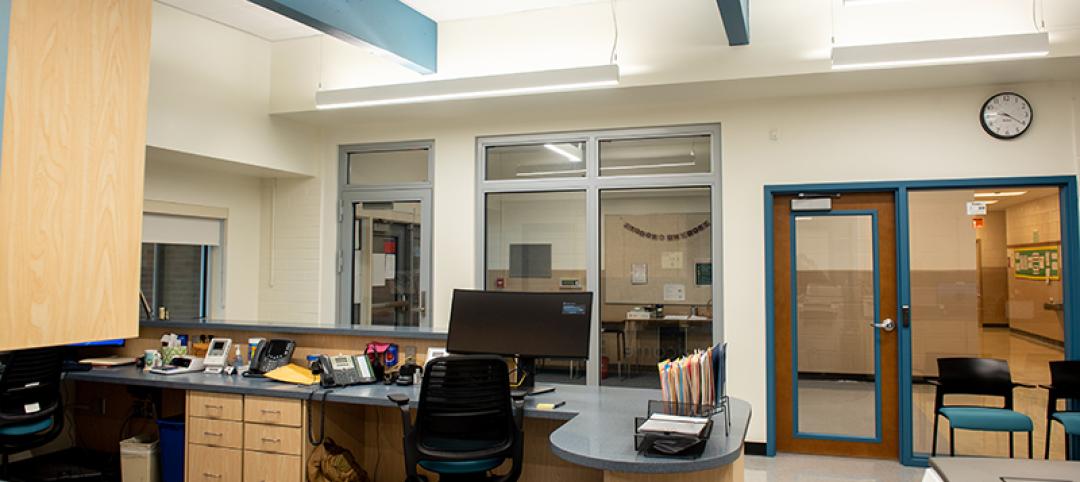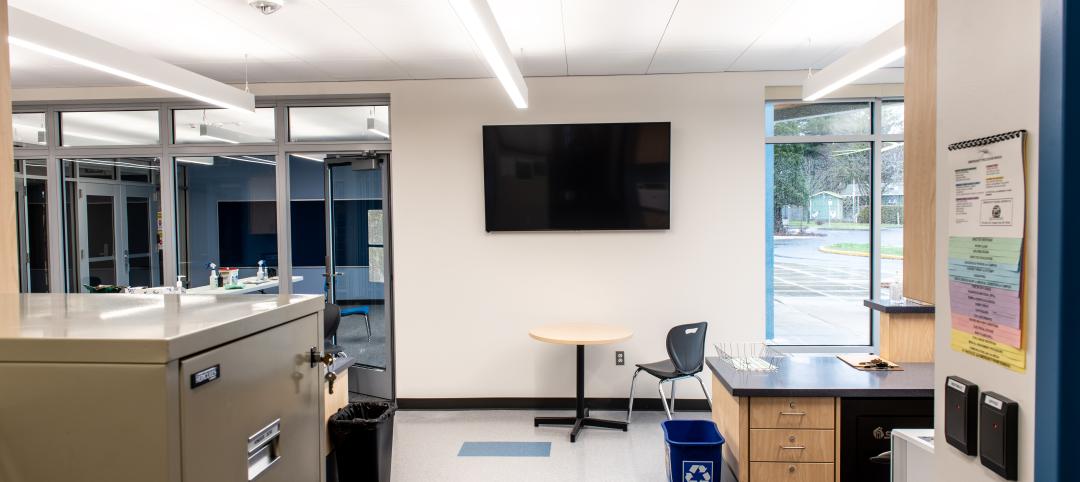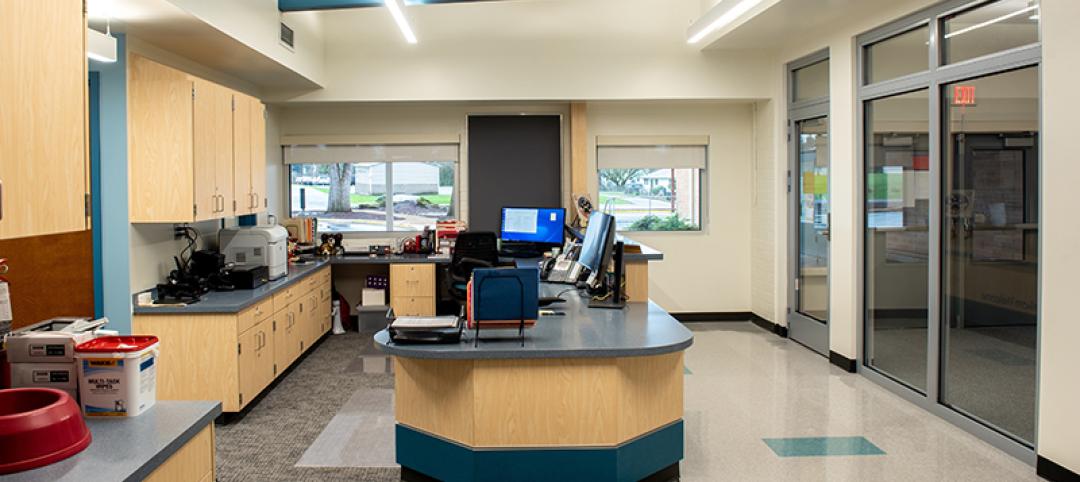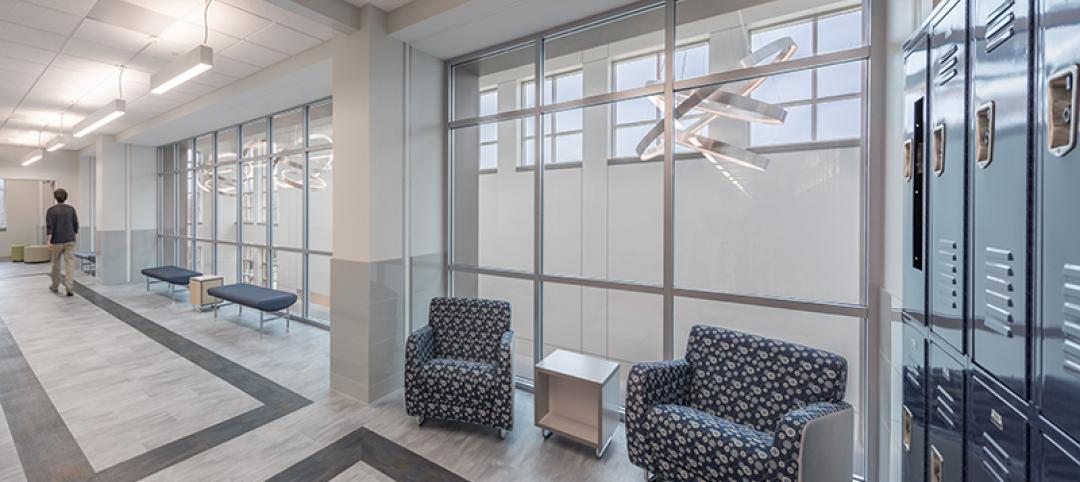Data presented by the National Glazing Association (NGA) offers an important consideration for those planning safer school designs. The NGA’s one-pager states that response times for first responders average three minutes. It also states that active shooter events often last between 90 seconds and eight minutes, making time a critical consideration for safer school design.
Using the full property, both the landscape and the building itself, to create barriers between violent intruders and occupants can be an effective strategy as it buys time for first responders to arrive. However, it is important that designers place these barriers in multiple areas, from the property line to the classroom. This strategy is called a multilayered approach to school safety and security and can improve the ability for a cohesive safety and security plan to protect students and faculty.

As recommended in the Partner Alliance for Safer Schools’ K-12 Guidelines (PASS K-12), architectural considerations across multiple layers of a school grounds can help deter and delay adversarial behaviors. To this end, a multilayered approach to school safety can increase the effectiveness of safer school designs, since this approach offers multiple fail safes and time barriers.
But with a multilayered approach, there is an increased chance that a system meant to protect occupants from violent threats will also be required by building codes to defend against fire and ensure a safe exit for those inside. This is because openings are a critical part of a means of egress paths, which are required by building codes to be fire-rated. In these areas, it is crucial for a door or window to defend against fire. For safer school design, it can also be important that these systems delay the ingress of intruders.
Striking a balance between egress requirements and security goals, multifunctional, fire-rated glazing systems like TGProtect™ FR System from Technical Glass Products (TGP) can be a solution. These systems can help provide around the clock protection from threats to security and life safety as well as support adjacent security measures, such as locking hardware and access control protocols as well as parking lot monitoring and other forms of surveillance.
Using multifunctional, fire-rated glass along the building perimeter
To achieve a multilayered approach to safer school design, it is important to first define key layers of school protection. The PASS K-12 guidelines identify five layers of protection: district, property, parking lot, building and classroom perimeters. In terms of specifying multifunctional, fire-rated glazing, the building and classroom layers are the most critical to consider.
Within the building perimeter layer, schools can look to entryways, first floor windows and exterior-facing openings in stairwells as places to specify security-rated glazing. Except for certain building return conditions and buildings in close proximity to property lines or other buildings, these areas will most likely not need fire-rated openings—specifiers are encouraged to consult with local codes and to contact an Authority Having Jurisdiction (AHJ) to clarify project requirements. However, secure entry vestibules may need to incorporate fire-rated materials. Depending on their design and orientation within a building, a secure entry vestibule may be the nearest means of exit for front office staff or other students and faculty, making it critical that it satisfies code requirements for fire and life safety.
For example, an Oregon City school district renovated two schools with a focus on improving safety and security. These renovations included plans to create secure entry vestibules that met recommendations for safer school design. Due to local building codes, the wall between the front office and the adjacent corridor needed a fire rating. To achieve code-compliance and the desired level of security, the design team specified multifunctional, fire-rated glazing systems from TGP. These systems provide fire-resistance ratings and meet multiple force-entry test standards to achieve code compliance and security goals for these two projects. Multifunctional, fire-rated glass also preserved open sightlines between the front office and the main hall as well as the parking lot. On one hand, this supported security efforts by allowing staff to monitor parking lots and hallways in real time. On the other, it also contributed to a more welcoming environment by creating an open and light-filled space.
Supporting safer school design within the school building
In addition to the building perimeter, classroom doors and windows can provide an opportunity to achieve a multilayered approach to safer school design. According to PASS, the classroom perimeter is often the first layer of defense when a violent attacker is already inside the school. Code-compliant locking hardware is a key component to safer school design. In fact, the evidence presented to the Sandy Hook Advisory Commission indicated that active shooters have never breached a locked door. However, glass has traditionally been a weaker link in blocking violent threats.
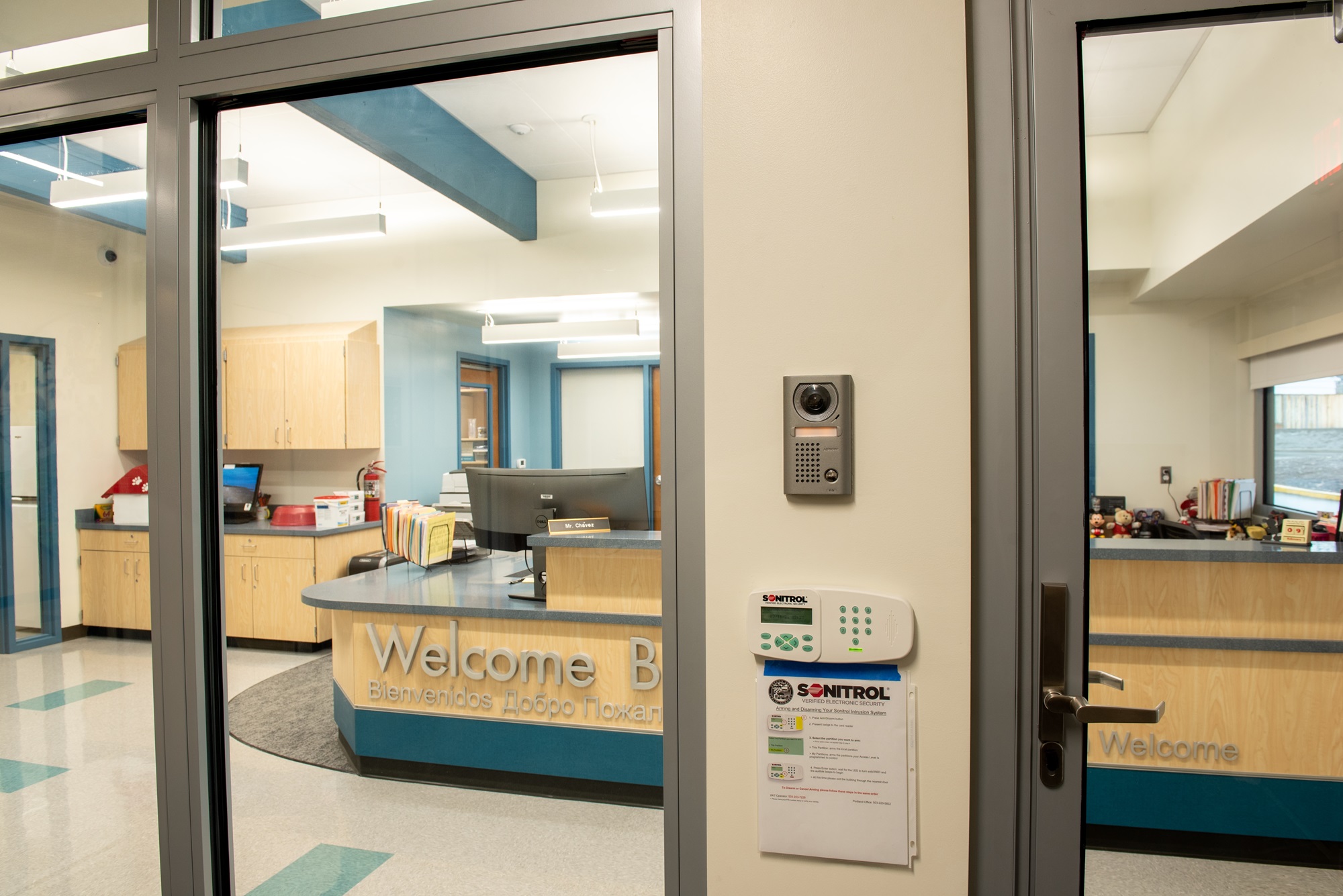
When specified in vision and sidelites, security-rated glazing can bolster the effectiveness of a locked door while also supporting the ability of occupants to monitor what is happening outside of a classroom with minimal risk. In some districts, however, local building codes may have more stringent requirements for fire and life safety. For instance, in Chicago, all doors leading from classrooms to exit corridors must be fire-rated, regardless of the presence of a sprinkler system. In applications like this, specifiers can use multifunctional, fire-rated glass like Pilkington Pyrostop® laminated to School Guard Glass® to meet code requirements and security goals.
Providing protection against forced-entry and ballistic attack is an important consideration for safer school design. When incorporated within multiple layers of the built environment, products with these ratings help protect occupants by placing barriers between them and violent intruders, allowing more time for faculty to contact authorities and for first responders to arrive on scene. As data shows, delaying attackers for mere minutes can significantly reduce their potential to cause harm and can be a key aspect of safer school design.
That said, maintaining code requirements for fire and life safety is also a critical component of school design. In areas where multiple forms of protection are desired, multifunctional, fire-rated glass and framing systems can provide a viable solution. Not only do they bolster individual layers of protection, but they also support adjacent and connected security measures to help designers more readily achieve a multilayered approach to safer school design.
More from Author
Devin Bowman, TGP | Sep 23, 2024
Using Specialty Glazing Central to Achieve Safer School Design
Three schools offer examples of how specialty glazing, such as security- and fire-rated glass, can be used to achieve safer school design.
Devin Bowman, TGP | Jul 22, 2024
Fire-Rated Frames Contribute More Than Code Compliance
Fire-rated design is no longer limited to opaque materials. Fire-rated glass and narrow-profile, fire-rated frames support inspiring and code-compliant designs.
Devin Bowman, TGP | Jun 17, 2024
Fire-rated Glazing Supports Safer School Design
Fire-rated glazing supports safer school design and supports building plans that meet model building code requirements.
Devin Bowman, TGP | May 20, 2024
How to Bolster Classroom Security with Security-Rated Glazing
Several types of security-rated glazing play different roles in safer school design. This blog looks at three types and how they can enhance classroom security.
Devin Bowman, TGP | Apr 22, 2024
Achieving Safer School Design with Secure Entry Vestibules
Designers can plan secure entry vestibules with security-rated glazing to enhance the effectiveness of their safer school designs.
Devin Bowman, TGP | Aug 16, 2023
Time Barriers: Layering Security Systems for Safe School Design
This blog explains the difference between active and passive protection and why both are necessary for safe school design.
Devin Bowman, TGP | Jul 20, 2023
Passing Marks: Transferring Safer School Design to Other Applications
The benefits of safer school design can improve the safety and security of more general-use projects—especially with the use of passive protection.
Devin Bowman, TGP | Jun 12, 2023
Building Perimeters are Only One Layer in Safe School Design
Hardening entryways and exterior windows is a step toward safer school design. But what more can be done?
Devin Bowman, TGP | May 25, 2023
Safety AND Security: The Importance of Component Compatibility
With proposed and passed laws, it’s important lawmakers and building professionals acknowledge the interplay between fire safety and building security.
Devin Bowman, TGP | Apr 27, 2023
Passing The Test for Safer School Design
Knowing testing protocols can help us understand how to better provide protection in areas that need to address multiple types of life safety threats.

